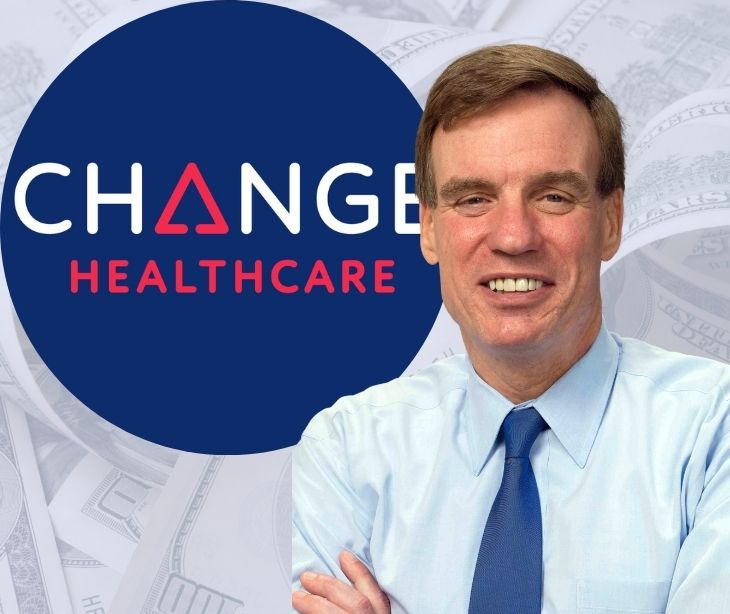4 min read
Walmart's clinic closures reduce healthcare access for rural patients
Tshedimoso Makhene
May 20, 2024

Walmart will cease operations of all 51 Walmart Health centers and virtual 24/7 healthcare services.
What happened?
In April 2024, Walmart announced that it’d be closing all 51 Walmart Health centers in five states and shutting down its virtual healthcare service. This comes as a shock, as the company had announced an expansion of its virtual 24/7 health care and its “brick-and-mortar health centers.” This decision was due to financial challenges and an unsustainable business model. Only the vision centers and pharmacies not part of Walmart Health will remain operational.
Walgreens will also shut down 160 VillageMD clinics across the country, while CVS plans on expanding its Oak Street Health clinics specializing in primary care for seniors, despite having closed some of its MinuteClinics for nearly all ages earlier this year.
Going deeper
Walmart's decision to close primary care services reflects bigger economic challenges in healthcare, which is struggling with low government reimbursements for primary care, a shortage of nurses and doctors, and soaring costs for supplies and labor. Mercer, a healthcare consulting firm, had predicted shortages of health aides (446,300), clinical lab technicians (98,000), and physicians and surgeons (11,000) by 2025 before the pandemic. In 2016, research indicated that over 500,000 nurses would be scarce by 2030. For patients in rural areas or areas with limited resources served by Walmart, the closings will mean difficulty finding health care in the near term and traveling longer distances once they do. Walmart found that affordable care was not affordable for providers, even for “a retail giant known for squeezing out a profit from low-margin businesses like groceries.”
The impact of Walmart's closures will be felt most acutely since many clinic patrons had not received medical or dental care from a primary provider for multiple years before receiving care at Walmart.
Many experts believe virtual care, or telehealth, will become a larger part of care. Telehealth may still be a financial struggle for companies, but it may be more accessible for rural, low-income, and underserved communities. To ease the ongoing healthcare worker shortage, the University of New Haven's Brian Marks sees regulations changing to allow non-physicians like nurse practitioners and physician assistants to provide more services.
See also: HIPAA Compliant Email: The Definitive Guide
What was said?
Walmart announced on April 30 that it would close its health centers in five states and stop providing virtual healthcare services because it was “not a sustainable business model.”
Hal Andrews, chief executive of healthcare consulting firm Trilliant Health, said that this closure will make it difficult for patients to find healthcare services close to Walmart Health or to travel long distances once they find a closer provider.
Walmart told USA Today that this was a "difficult decision, and like others, the challenging reimbursement environment and escalating operating costs create a lack of profitability that make the care business unsustainable for us at this time." Brian Marks, University of New Haven senior lecturer of economics and business analytics, said that the country’s economics make it difficult to run healthcare businesses and suggests the “need to reexamine the primary health care delivery system.”
According to Andrew, Walmart mostly had centers in rural, low-income, and underserved communities in Arkansas, Florida, Georgia, Illinois, and Texas, and these are the areas that will suffer the most from the closings. Web Golinkin, a former healthcare CEO, pointed out that primary care facilities face comparable financial obstacles, which may ultimately result in the merging of healthcare clinics.
Why it matters
The closure of Walmart's primary care services has significant implications, particularly for rural and lower-income Americans who rely on these facilities for accessible healthcare. Patients in these areas will now face increased difficulties in obtaining medical care, including longer travel distances and extended wait times.
This closure exacerbates existing healthcare disparities, leaving many without nearby options for primary, dental, vision, and mental health services. This situation highlights broader systemic issues in the healthcare industry, such as insufficient government reimbursements and workforce shortages, which challenge the sustainability of affordable primary care. Consequently, the health outcomes of affected communities may deteriorate, and the burden on remaining healthcare providers will likely increase, straining an already overstretched system.
What to look out for
With a financial burden looming over the healthcare industry, telehealth can be expected to increase its role in the healthcare landscape, offering several benefits to patients, especially those in underserved and rural areas.
Telehealth provides convenient access to medical consultations, allowing patients to receive care from the comfort of their homes, thereby reducing travel time and expenses. This mode of care can be particularly beneficial for mental health services, where patients often find comfort in remote consultations. Additionally, telehealth facilitates quicker access to healthcare providers, potentially reducing wait times for appointments. As technology advances, telehealth platforms are likely to become more sophisticated, offering comprehensive services such as virtual checkups, remote monitoring, and access to specialist care. However, patients should stay informed about the availability and quality of telehealth services, and ensure that they have the necessary technology and internet connectivity to fully benefit from these innovations.
FAQs
What is telehealth?
Telehealth is the use of digital information and communication technologies, such as computers, smartphones, and the internet, to provide and manage health care services remotely. It allows patients to consult with healthcare providers through video calls, phone calls, text messages, and mobile apps, facilitating access to medical advice, diagnosis, treatment, and monitoring without the need for in-person visits. Telehealth is especially useful for routine check-ups, follow-up appointments, mental health counseling, and managing chronic conditions, enhancing convenience and accessibility, particularly for those in remote or underserved areas.
What challenges are associated with telehealth services?
Telehealth faces several challenges, including:
- Digital divide: Not all patients have access to the necessary technology or reliable internet connections, particularly in rural or low-income areas.
- Technological proficiency: Some patients, especially older adults, may struggle with using digital platforms, creating barriers to accessing telehealth services.
- Regulatory and reimbursement issues: Varying state regulations and inconsistent insurance reimbursement policies can complicate the delivery and financial viability of telehealth services.
- Quality of care: Certain medical conditions require physical examinations or tests that cannot be conducted remotely, potentially limiting the effectiveness of telehealth for comprehensive care.
- Data security and privacy: Ensuring the confidentiality and security of patient information in digital communications is a significant concern, requiring robust cybersecurity measures.
- Economic sustainability: Telehealth services need to find a sustainable business model, as low reimbursement rates and high operating costs can hinder profitability for providers.
Addressing these challenges is essential for telehealth to become a reliable and accessible component of the healthcare system.
Are telehealth services HIPAA compliant?
Telehealth services can be HIPAA compliant, but it depends on the specific service and how the service is implemented.
Related: What are HIPAA’s privacy requirements for telehealth?
Subscribe to Paubox Weekly
Every Friday we'll bring you the most important news from Paubox. Our aim is to make you smarter, faster.



